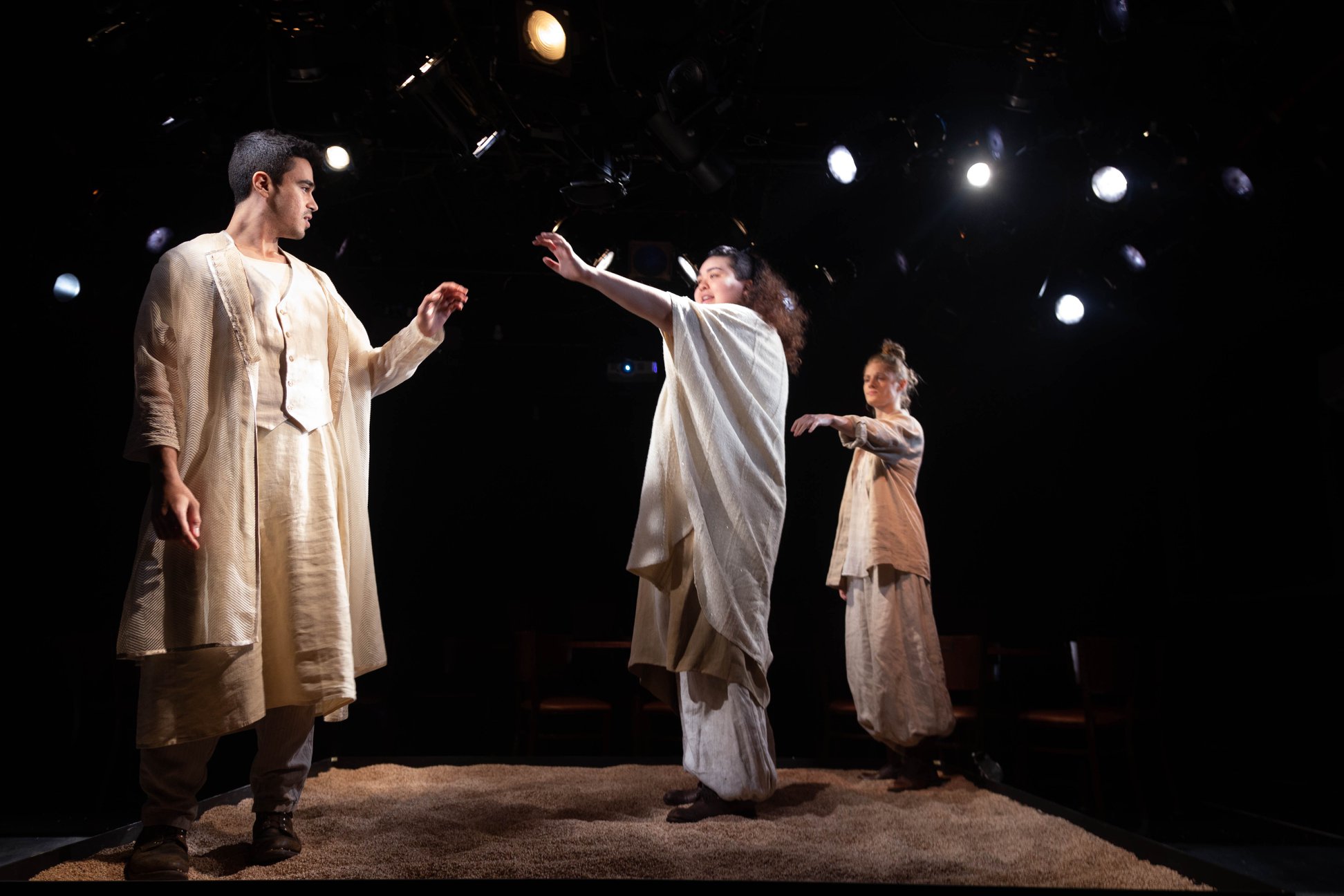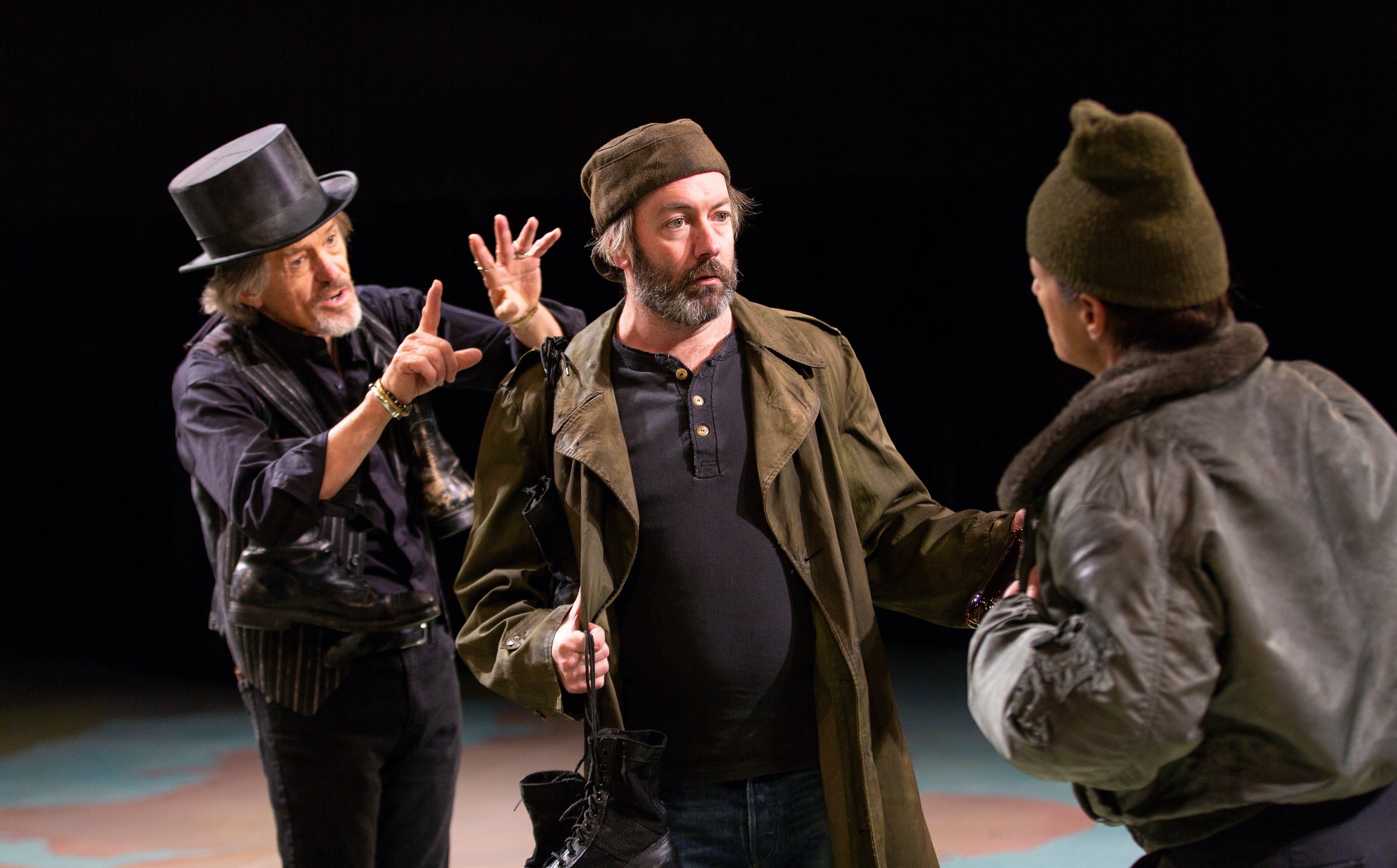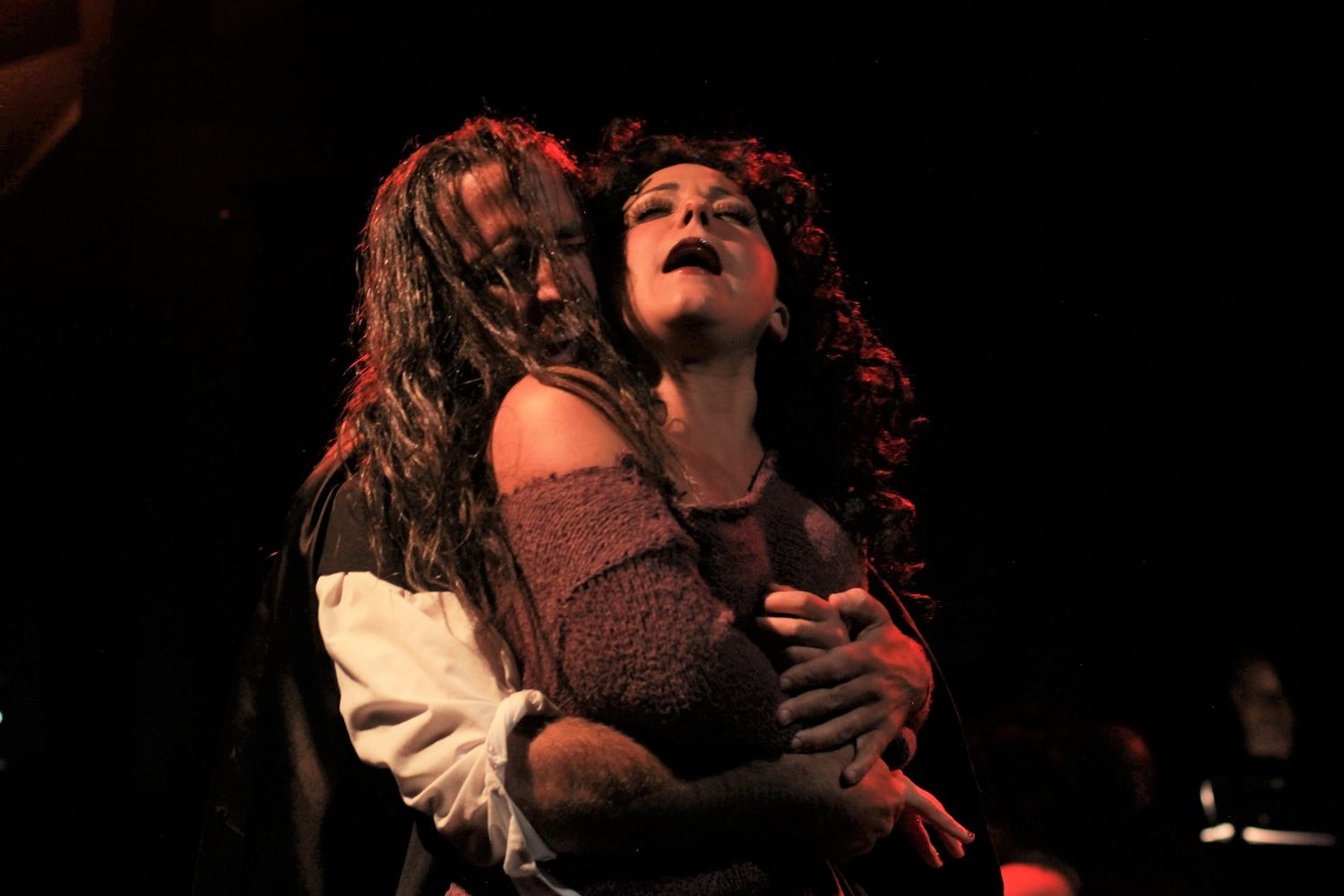Review of Jesus Hopped the A Train, Collective Consciousness Theatre
Collective Consciousness Theatre, the black box theater in Erector Square with a penchant for urban dramas and works by authors of color, is back with its first production of the season: Stephen Adly Guirgis’ sobering Jesus Hopped the A Train. First produced in 2000, the play sets up a situation where crime and punishment combine with a story of charisma and faith, where the legal system and a higher law meet.
Incarceration is a way of life, particularly for African Americans in the U.S., but does it serve any purpose? The story focuses on the interaction between two men locked-up in protective custody. One, Lucius Jenkins (Terrence Riggins), is an avowed serial killer trying to avoid extradition to Florida where he would be put to death, while also telling anyone who will listen about his faith in Jesus; the other is Angel (Jhulenty Delossantos), a somewhat confused youth accused of attempting to assassinate the leader of a religious cult who, Angel says, brainwashed his best friend. The shooting was not intended to be lethal, Angel claims, and was a just action. The two prisoners meet during the recreational hour they spend in outdoor cells divided by a narrow walkway. Jenkins never misses his hour outdoors and puts the time to use as best he can, including vigorous exercise while reciting the names of the books of the Bible backwards.
Lucius Jenkins (Terrence Higgins), D’Amico (Rob Giardian) in Collective Consciousness Theatre’s production of Jesus Hopped the A Train
In this gripping production directed by Dexter J. Singleton, the personalities of the two men dominate the play. Mostly contentious, the two find terms of uneasy fellowship, though most of the sympathy tends to run in one direction only, from Lucius to Angel. The play establishes a simple contrast that yields much complexity: Lucius is by far the worse criminal, but he has a view of life—now that he’s likely to lose his—that has redeeming value; Angel has lost his faith in God, but his crime, in his view, was a blow for goodness. He’s desperate to find an attorney who can make his case—assault, yes, but not attempted murder. He gets Mary Jane Hanrahan (Bridget McCarthy), an attorney Angel offends by calling her a bitch, but who takes the case because she sees a certain sense in Angel’s plea and prides herself on turning juries her way. Of course, as the day in court nears, Angel must be coached in how to deny everything.
Angel (Jhulenty Delossantos), Bridget McCarthy (Mary Jane Hanrahan)
Jenkins, by contrast, doesn’t deny anything in his sordid past, and his challenge to Angel is to own his actions, even if, as in Jenkins’ case, they are cold-blooded killings that “didn’t feel wrong.” Long before we hear Jenkins share horrible details of his crimes, we have already gotten to know him—we might think—as a personable older inmate trying to look out for a younger one. Initially, we see him using his considerable charm to elicit favors from D’Amico (Rob Giardian), a white guard under Jenkins’ sway. When D’Amico is replaced by Valdez (Jason Hall), a surly guard who seems to relish sounding like a movie hard-ass, the change makes more emphatic the “us against them” outlook of Jenkins’ pitch to Angel.
Riggins, who played a topdog-turned-underdog in last season’s Topdog/Underdog at CCT, has a knack for playing canny street dudes who earn our trust with a steady patter of amusing observations and insights. He creates a memorable Jenkins, a character who makes us confront how easily good and evil can be at home in the same person. It’s easy to—as D’Amico—says “like him,” and yet Riggins makes it hard for us to trust Jenkins. His “act” is so studied as to seem perfectly natural and that gives us pause. In a very different register, Delossantos’ Angel is as well-realized. He’s not as garrulous or personable as Jenkins because he hasn’t learned to mask his vexations so smoothly. He tends to wear his heart on his sleeve and provides the main focus for our sympathy.
A harder read is McCarthy’s Hanrahan. She’s forthright to the audience in several brief monologues that often serve simply as plot devices, doing little to evince her character, but setting up the tension of the story outside the jail: what will be the result of Angel’s day in court? Hanrahan emerges as someone whose motives get in the way of her ends, but the legal situation, in the play, serves only as a way of contrasting the law with the truth. Thus, much of the time spent on the case seems less than necessary.
D’Amico (Rob Giardian), foreground; Lucius (Terrence Higgins), Angel (Jhulenty Delossantos), background
As the sympathetic jailer D’Amico, Giardian scores with a monologue about attending an execution that just manages to shift from being all about the speaker to show us something of Jenkins’ fascination. As the sadistic jailer, Hall at least makes us feel that Valdez is playing a role to avoid falling under Jenkins’ spell, a role forced on him by the situation.
With David Sepulveda’s realistic set design and effective lighting design by Jamie Burnett, sound design by Tommy Rosati, and costumes by Carol Koumbaros, CCT’s Jesus Hopped the A Train has a fascinating power, its tension sustained by characters who draw us in and keep us there. Giurgis specializes in showing us people who are in love with the sound of their own voices, and in Jenkins he gives us an especially spell-binding hero—a possibly regenerate villain who, with death looming, has no time for the lies we tell for the sake of ego or to spare feelings. Lucius and Angel are well-worth the time spent with them on the inside.
Jesus Hopped the A Train plays for four more performances, Thursday, November 8-Sunday, November 11.
Jesus Hopped the A Train
By Stephen Adly Guirgis
Directed by Dexter J. Singleton
Production Stage Manager: Ashley Sweet; Assistant Stage Manager/Propsmaster: Emiley Charley; Set Design: David Sepulveda; Lighting Design: Jamie Burnett; Sound Design: Tommy Rosati; Costume Design: Carol Koumbaros; Producer: Jenny Nelson
Cast: Jhulenty Delossantos, Rob Giardian, Jason Hall, Bridget McCarthy, Terrence Riggins
Collective Consciousness Theatre
October 25-November 11, 2018

































































